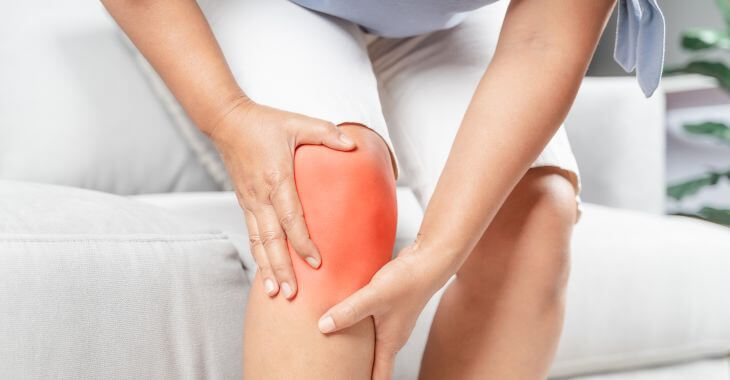Can Arthritis Be Reversed or Stopped?

Did you know that the Centers for Disease Control and Prevention (CDC ) estimates 23% of Americans have some form of arthritis? That is about 54 million people that suffer from inflammation in their joints that can cause debilitating pain. There are over 100 types of arthritis that can impact people of all ages and their quality of life. If you have this disease, you may wonder if arthritis can be reversed, cured or stopped. Here is what you need to know about arthritis and how to stop arthritis from progressing.
What is Arthritis?
Arthritis is a group of conditions that cause inflammation in the joints. The most common type of arthritis is osteoarthritis, which accounts for about one half of arthritis cases in the U.S. Osteoarthritis is a degenerative condition which progressively becomes worse with age – most people 60 years of age or older have some degree of osteoarthritis. Other types of arthritis include rheumatoid arthritis, gout and lupus.
While each type of arthritis is slightly different in causes and symptoms, the main connecting factor is joint inflammation. Inflammation is a way that the body protects against infection, but ongoing inflammation in the joints can cause pain and deterioration. Arthritis can result in swollen, stiff and painful joints in the fingers, wrist, shoulder, hip, knees and other joints. It can also result in worn cartilage and damaged joints to the point they no longer work correctly or allow for normal mobility.
There is not a cure for arthritis – joint inflammation can be linked to genetic factors, lifestyle, other chronic diseases and injuries. While you may be able to reduce your risk for some types of arthritis by staying healthy and active, there is no sure way to prevent arthritis or cure it once you have the disease. However, there have been medical advances in treatments that can help manage this disease, minimizing the damage to joints, improving function and reducing pain.
How to Stop Arthritis from Progressing
Unfortunately, arthritis is a progressive disease that can cause harm to the joints. Constant inflammation can result in painful, swollen joints that are stiff and dysfunctional. This includes joints in the spine – neck and back pain are often caused by osteoarthritis in the facet joints. The key to stopping arthritis progression is detecting the disease early and making efforts to reduce damage to the joints. Some tips on how to slow arthritic damage from osteoarthritis and other degenerative arthritis include:
- Maintain a healthy weight to reduce strain on joints
- Control blood sugar – diabetes and arthritis have been linked
- Keep active – exercising and strengthening muscles can protect the joints from damage
- Minimize joint injuries – wear proper footwear and avoid joint injury risks
- Stay healthy – eat right, get enough sleep and avoid unhealthy habits like smoking
Some factors that contribute to arthritis and joint damage cannot be avoided. Genetics and aging play important roles in arthritis progression. However, there are lifestyle factors you can control. Your doctor can help you create a lifestyle plan to slow the progression of arthritis and joint damage. There are also cutting-edge treatments to reduce arthritis pain and repair joint damage once arthritis progresses with age. Some arthritis is caused by autoimmune disorders – controlling autoimmune response can reduce joint inflammation.

Joint Preservation Arthritis Treatments
Can arthritis be reversed? While there is not a cure and it is not possible to reverse all the damage caused by arthritis, there are joint preservation treatments. Conservative treatments for the beginning stages of arthritis include exercise, anti-inflammatory medications, steroid joint injections and healthy nutrition. However, if arthritis progresses, it can damage the cartilage in the joints. There are some joint preservation treatments that can improve lubrication and repair the cartilage in joints deteriorated from arthritis. Some of these treatments include:
- Platelet-rich plasma (PRP) injections
- Stem cell and regenerative medicine
- Hyaluronic acid injections
- Joint drilling
- Cartilage grafts and implantation
Joint preservation treatments can help repair damage caused by arthritis, but it does not completely reverse the condition or stop future damage. The goal of joint preservation treatments is to delay or avoid the need for invasive surgery or joint replacements. This can reduce pain and improve mobility for those living with severe arthritis.
Living with Arthritis
People of all ages can be diagnosed with arthritis. For some, there may not be any symptoms for years, while others may experience chronic pain before they even know they have arthritis. The best course of action is to talk with your physician as soon as you are diagnosed with arthritis. Your doctor can determine if there are lifestyle changes and treatments that can help slow the progression of the damage to the joints. If you have arthritis pain or limited mobility, there are treatments that can help manage pain and preserve the joints, even if it does not reverse or stop arthritis completely.
The information provided on this website, including text, graphics, images, and other materials, is intended solely for informational purposes and should not be used as a substitute for professional medical advice, diagnosis, or treatment.


)